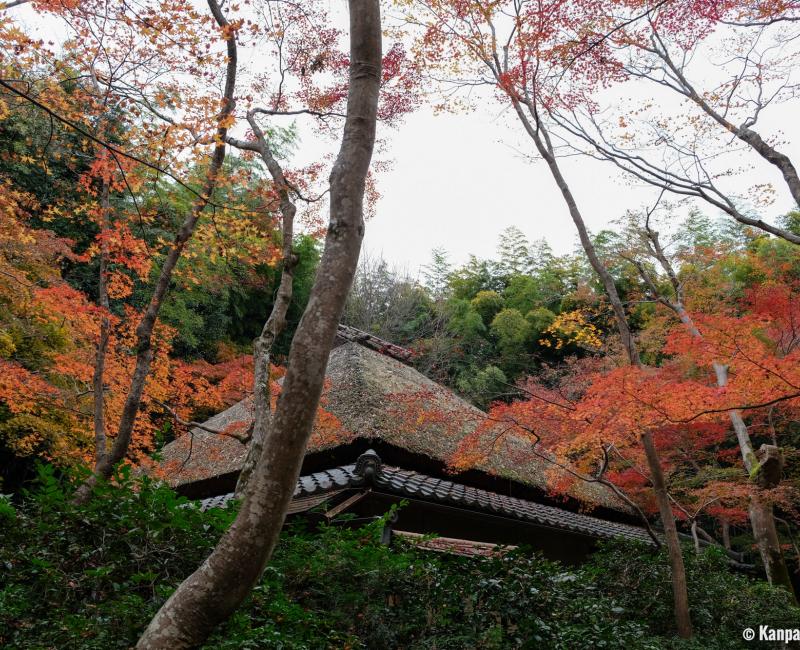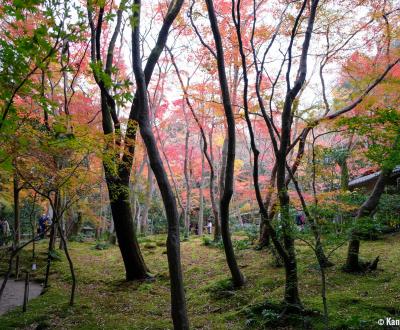Gio-ji
Arashiyama Moss Garden under the Maple Trees
Gio-ji is a small Buddhist temple located in Arashiyama, in the north-west of Kyoto. It is famous for its garden displaying seventeen species of moss, hidden under great maple trees, whose leaves’ orange and red hues brighten the green scenery in autumn.
The temple was first founded under the name Ojo-in by the Buddhist Jodo-shu sect (or "Pure Land School"). It was later renamed from a tragic love story told in the Tale of the Heike: Gio, a traditional dancer, was spurned by her lover, the military leader Taira no Kiyomori (1118 - 1181). She withdrew at the temple, that was also a convent, where she spent the rest of her life.
Gio-ji is located astray from the most popular touristic spots, in the residential Arashiyama. It is nonetheless attractive to those who appreciate lush, forested landscapes that remind of Hayao Miyazaki’s works. A shaggy thatched-roof gate signals the entrance of the temple’s grounds, from which the garden, the main interest of the place, is quickly accessed.

Arashiyama’s secret autumnal spot
A beautiful moss cover spreads at the foot of the mountain, inviting to walk barefoot on this natural carpet that seems so soft. However, this living artwork must remain untouched and be left developing under the indispensable shade of the numerous Japanese maple trees (momiji 🍁). In autumn, the mossy lawn transforms into a multicolored canvas, with vivid yellow, orange, red and green. During the period of vibrant koyo, usually at the end of November, the magic in the air increases, as well as the number of visitors. In early summer, the hot and humid weather is also favorable to a peaceful contemplation of the various shades of green.
At the end of the walk, samples of the garden’s seventeen species of moss are displayed in small earthenware containers. It is an opportunity to consider the plants with a scientific approach and engage in a game to identify all the species. In the temple’s surroundings, a lovely bamboo grove adds to the charm and the originality of this Zen landscape.
There is only one small traditional pavilion in Gio-ji, where it is possible to shelter and take a rest on tatami mats, but where pictures are forbidden. On a side note, Gio-ji partnered with Daikaku-ji, a neighboring temple at a 20 minutes’ walk away, to propose a combined visit ticket.

